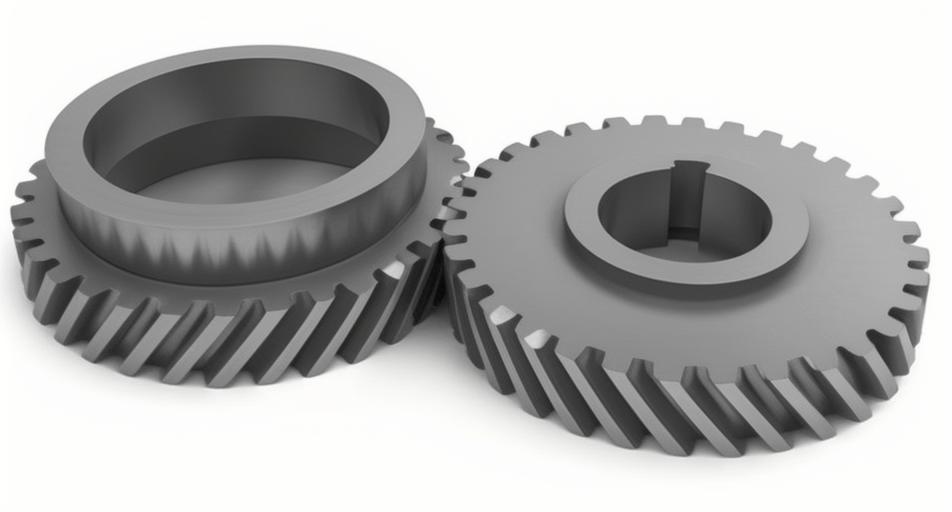
Introduction
Helical gear is widely used in various industrial applications due to their high efficiency, load-carrying capacity, and smooth operation. However, like all mechanical components, they are subject to fatigue and failure over time. Understanding the mechanisms of fatigue and failure in helical gear is crucial for enhancing their durability and performance. This article explores advanced testing methods for analyzing helical gear fatigue and failure, providing insights into the latest techniques and technologies in the field.
Importance of Helical Gear Fatigue Analysis
Fatigue analysis is essential for predicting the lifespan of helical gear and preventing unexpected failures that can lead to costly downtime and repairs. Helical gear is particularly susceptible to fatigue due to the continuous and varying loads they experience during operation. Advanced testing methods enable engineers to identify the onset of fatigue, understand failure modes, and develop strategies to mitigate these issues.
Advanced Testing Methods
1. Finite Element Analysis (FEA)
Finite Element Analysis (FEA) is a powerful computational tool used to simulate and analyze the stress distribution and deformation of helical gear under various load conditions. By creating a detailed 3D model of helical gear, FEA allows engineers to identify critical stress points and predict potential failure locations. This method is highly effective in optimizing helical gear design and improving material selection.
2. Acoustic Emission Testing (AET)
Acoustic Emission Testing (AET) is a non-destructive testing method that monitors the sound waves produced by the formation and growth of cracks within helical gear material. By detecting these emissions, engineers can identify the initiation and progression of fatigue cracks in real-time. AET is particularly useful for early detection of fatigue, allowing for timely maintenance and repairs.
3. X-Ray Diffraction (XRD) Analysis
X-Ray Diffraction (XRD) Analysis is used to study the residual stresses and microstructural changes in helical gear. Residual stresses can significantly affect the fatigue life of helical gear. XRD provides detailed information on the internal stress distribution and phase composition of helical gear material, aiding in the assessment of fatigue damage and the development of more durable gears.
4. Scanning Electron Microscopy (SEM)
Scanning Electron Microscopy (SEM) is employed to examine the surface morphology and microstructural features of failed helical gear components. SEM provides high-resolution images that reveal details about the fracture surfaces, crack propagation, and wear patterns. This information is crucial for understanding the root causes of helical gear failure and improving material and design choices.
5. Digital Image Correlation (DIC)
Digital Image Correlation (DIC) is an optical method that measures the deformation and strain of helical gear under load. By analyzing the displacement of a speckle pattern applied to helical gear surface, DIC provides full-field strain measurements with high accuracy. This technique is valuable for validating FEA models and assessing the performance of helical gear in real-world conditions.
Comparison of Testing Methods
The following table compares the advanced testing methods discussed above based on various criteria such as accuracy, application, and advantages.
| Testing Method | Accuracy | Application | Advantages |
|---|---|---|---|
| Finite Element Analysis (FEA) | High | Stress distribution analysis | Detailed 3D modeling, design optimization |
| Acoustic Emission Testing (AET) | Moderate | Early crack detection | Real-time monitoring, early failure detection |
| X-Ray Diffraction (XRD) Analysis | High | Residual stress measurement | Detailed internal stress analysis |
| Scanning Electron Microscopy (SEM) | High | Fracture surface examination | High-resolution imaging, root cause analysis |
| Digital Image Correlation (DIC) | High | Strain measurement | Full-field strain measurements, high accuracy |
Conclusion
Advanced testing methods are indispensable for analyzing the fatigue and failure of helical gear. Techniques such as Finite Element Analysis, Acoustic Emission Testing, X-Ray Diffraction Analysis, Scanning Electron Microscopy, and Digital Image Correlation provide comprehensive insights into the behavior of helical gear under various conditions. By leveraging these methods, engineers can enhance gear design, improve material selection, and ultimately extend the service life of helical gear.
